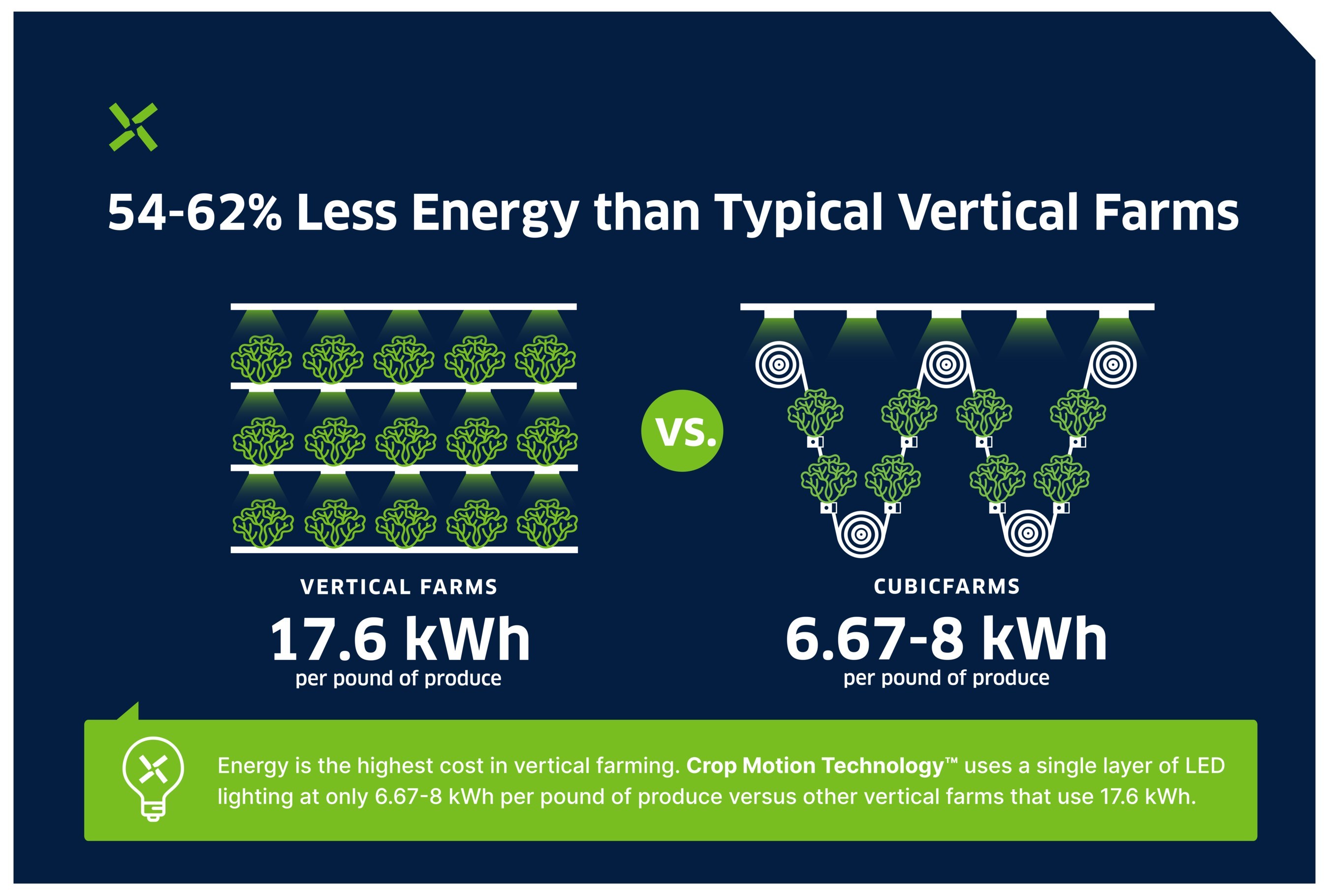
CubicFarm releases data showing its vertical farms use 54% to 62% less energy
by CM Staff

Patented Crop Motion Technology™ moves plants to one layer of LED grow lights, unlike typical rack and stack layouts of other vertical farms that use multiple layers of energy-intensive LEDs.

CubicFarm System modules use 54–62% less energy than typical vertical farms. (CNW Group/CubicFarm Systems Corp.)
VANCOUVER — CubicFarm® Systems Corp., a local chain agricultural technology company, announced new data that demonstrates 54% to 62% less energy is used in a CubicFarm System module compared to results reported by other vertical farms surveyed globally. With electricity being the number one input cost in vertical farming, this is a reported advantage to customers using the CubicFarm System technology for indoor growing.
Most vertical farming operations rely on light emitting diode grow lights positioned above every row of plants. Despite the significant land, water, and labour benefits of year-round indoor growing, the high energy usage of LED grow lights has, until now, slowed the wider adoption of Controlled Environment Agriculture.
In 2020, the global vertical farming market was estimated at $3.24 billion and is expected to reach $24.11 billion by 2030. An advisory firm, Agritecture, highlighted the need for greater transparency and accountability for claims about energy use in the vertical farming sector in its 2021 Global CEA Census Report.
“Lighting accounts for 65% of energy usage in a typical indoor farming operation,” reported Henry Gordon-Smith, Founder and Chief Executive Officer, Agritecture. “62% indicated that they track energy consumption, but only 28% provided a credible number. Reporting how growers measure specific ESG (environmental, social, and governance) outcomes provides much needed and valuable insights that affect new technology adoption rates, policies, financing, and global operations. We’re pleased to see CubicFarms taking a leadership role in benchmarking and sharing its significant energy savings.”
The Company initiated new data collection to better measure energy usage in the CubicFarm System. Patented Crop Motion Technology™ moves plants to one layer of LED grow lights, unlike typical rack and stack layouts of other vertical farms that use multiple layers of energy-intensive LEDs. Findings include:
- 17.6 kilowatt hours (“kWh”) per pound in typical vertical farms
- 8 kWh/pound in a CubicFarm System module (54% less than typical vertical farms)
- 6.67 kWh/pound in a CubicFarms FreshHub System (62% less than typical vertical farms)